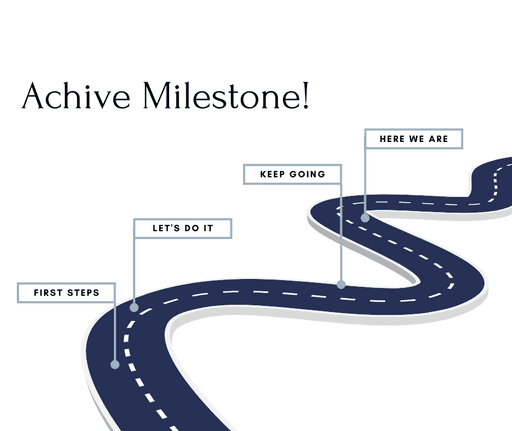09/04/2025
Starting an online store can feel overwhelming, especially if you're doing it for the first time. But with the right platform and a clear plan, it becomes a structured, step-by-step process. Shopify is one of the most beginner-friendly and widely used e-commerce platforms in India and globally. It helps entrepreneurs and small business owners create a professional online store without coding skills.
This article is a Shopify setup guide for beginners. We at Reformiqo, a trusted Shopify Development Company, will walk you through how to set up a Shopify store from scratch in 5 simple and practical steps.
Why Choose Shopify for Your E-Commerce Store?
Shopify has become a go-to choice for new businesses looking to start an online store. It's easy to use, secure, customizable, and scalable. You can set up your store, add products, accept payments, and start selling—all within a day.
If you're still unsure, read our blog: Why You Should Choose Shopify for Your E-Commerce Store to see why it's the preferred platform by startups and big brands alike.
Step 1: Sign Up and Choose Your Shopify Plan
The first step in this Shopify setup tutorial is to create your account.
Go to shopify.com and click Start Free Trial.
Enter your email address, password, and store name.
Follow the on-screen prompts to provide basic details like business goals and your current selling status.
Choosing a Plan: Shopify offers a 3-day free trial. After that, you’ll need to choose a plan:
Basic – Ideal for startups
Shopify – Best for growing businesses
Advanced – For scaling and analytics
Choose the plan that fits your business stage. You can upgrade anytime.
Step 2: Customize Your Store Theme and Design
After creating your account, your next task is to design your store using Shopify themes.
Go to Online Store > Themes in your dashboard.
Browse Shopify’s free and paid themes from the Theme Store.
Choose one and click Customize.
Customization Options:
Upload your logo
Choose brand colors
Set your fonts
Adjust layout blocks (banners, featured products, etc.)
Make sure your design looks good on mobile. A large number of shoppers in India browse and buy from mobile, so responsive design is a must.
Want something more advanced than a default theme? Reformiqo also offers services as a Framer Website Development Company for custom-built e-commerce experiences.
Step 3: Add Your Products and Set Up Collections
Now it’s time to add the actual products to your store.
Go to Products > Add Product.
Enter:
Title and Description
High-quality images
Price
SKU and Inventory details
Variants (like size or color)
Organize Products: Use collections to group similar items (e.g., Men’s Shoes, Electronics). Add tags to improve navigation and filtering.
SEO Tips:
Use keywords naturally in product titles and descriptions.
Add alt text for all images.
Write short, clear meta descriptions.
You can refer to our blog: Top Shopify Apps to Skyrocket Sales & Engagement for tools that help with SEO, reviews, and upselling.
Step 4: Set Up Payment, Shipping, and Tax Settings
Now that your products are ready, configure how your customers will pay and receive their orders.
Payments:
Go to Settings > Payments
Choose Shopify Payments, PayPal, Razorpay, or UPI-based options popular in India.
Shipping:
Define zones and rates under Settings > Shipping and Delivery
Offer free shipping if possible—it boosts conversion.
Taxes:
Go to Settings > Taxes and Duties
Enable GST and set it based on your location and business type.
Ensure tax invoices are GST-compliant for Indian customers.
Shopify handles these settings efficiently, but if you’re not confident with compliance or logistics, a consultation with Reformiqo can help.
Step 5: Launch Your Store and Go Live
Once you’re done with design, product setup, and logistics—time to go live.
Pre-Launch Checklist:
Test product pages, add-to-cart, and checkout
Add legal pages: Terms, Privacy Policy, Refund Policy
Check responsiveness on mobile and desktop
Install Google Analytics and Facebook Pixel
Buy a Domain:
You can buy a domain directly via Shopify or connect an existing one.
Use a domain name that matches your brand.
After everything checks out, click the “Launch” button and your store is live.
Bonus Tips: Optimize Your Store for Success
1. Install Useful Apps:
Add apps for SEO, reviews, email popups, upselling, and live chat. These improve the user experience and boost conversion rates.
2. Start Blogging:
Use content to drive organic traffic. Target keywords like “how to choose the best fitness tracker” and link back to your products. Blogging improves SEO and builds trust.
3. Use Analytics:
Track user behavior using Shopify Analytics and Google Analytics. Know which products get more attention and where users drop off.
4. Email Marketing:
Build a subscriber list through popups. Offer a discount for the first order. Use emails to re-engage abandoned carts or upsell to existing buyers.
Need help scaling? Our team at Reformiqo also specializes in Growth Marketing, PPC, and full-service Ecommerce Development Company offerings.
Conclusion: Start Your E-Commerce Journey Today
Setting up a Shopify store is easier than ever if you follow the right steps. With this guide, you now know how to:
Create your account and select a plan
Customize your store’s theme
Add products and create collections
Set up payments, shipping, and tax
Launch your store and start selling
From beginners to experienced sellers, Shopify offers everything needed to run an efficient online store. At Reformiqo, we help entrepreneurs like you build, launch, and grow Shopify stores that convert.
Ready to start your journey? Need expert support? Contact Reformiqo today and let’s build your online store the smart way.
160+ countries
12M secured users







